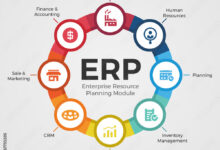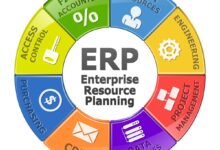Oracle ERP Cloud Implementation: 7 Proven Steps to Success
Thinking about upgrading your business systems? Oracle ERP Cloud implementation is more than just a tech shift—it’s a transformation that can redefine how your organization operates. From finance to supply chain, it promises agility, insight, and scalability. Let’s dive into what makes it a game-changer.
Understanding Oracle ERP Cloud Implementation

Oracle ERP Cloud is a comprehensive suite of enterprise resource planning applications delivered as a Software-as-a-Service (SaaS) solution. Unlike traditional on-premise ERP systems, it’s hosted in the cloud, offering faster deployment, lower infrastructure costs, and continuous innovation through regular updates. But what exactly does implementing it entail?
Oracle ERP Cloud implementation refers to the process of migrating from legacy systems—or setting up a new ERP system—using Oracle’s cloud-based platform. This includes configuring financials, procurement, project management, and other core business functions to align with an organization’s unique processes.
The implementation journey involves several phases: discovery, design, build, test, deploy, and optimize. Each phase requires careful planning, stakeholder alignment, and change management to ensure success. According to Oracle, organizations that follow a structured approach see up to 30% faster time-to-value compared to ad-hoc implementations (Oracle Implementation Services).
What Sets Oracle ERP Cloud Apart?
Oracle ERP Cloud stands out due to its deep integration with AI, machine learning, and analytics. It’s not just about automating tasks—it’s about predicting outcomes, detecting anomalies, and enabling proactive decision-making.
- AI-Powered Insights: Embedded intelligence helps forecast cash flow, detect fraud, and optimize procurement.
- Global Compliance: Built-in support for tax regulations, financial reporting standards (like IFRS and GAAP), and multi-currency operations.
- Scalability: Grows with your business, supporting everything from mid-sized firms to global enterprises.
“Oracle ERP Cloud isn’t just software—it’s a strategic asset that transforms finance from a back-office function to a forward-looking driver of growth.” — Oracle Industry Analyst
Common Use Cases Across Industries
Oracle ERP Cloud implementation is not one-size-fits-all. Different industries leverage it in unique ways:
- Manufacturing: Streamlines production planning, inventory management, and cost accounting.
- Retail: Integrates order management, financials, and supply chain for omnichannel operations.
- Healthcare: Manages grants, contracts, and compliance while reducing administrative overhead.
- Public Sector: Supports fund accounting, budgeting, and audit trails with transparency.
For example, Oracle’s customer success stories highlight how a global pharmaceutical company reduced month-end close time by 50% after implementing Oracle ERP Cloud.
Key Benefits of Oracle ERP Cloud Implementation
Why are so many organizations making the move to Oracle ERP Cloud? The answer lies in the tangible and strategic advantages it delivers. When done right, an Oracle ERP cloud implementation can transform operations, reduce costs, and empower data-driven decisions.
Real-Time Financial Visibility
One of the most significant benefits is real-time financial reporting. Traditional ERPs often rely on batch processing, leading to delays in data availability. Oracle ERP Cloud, however, provides live dashboards and analytics that reflect current business conditions.
- Instant access to P&L, balance sheets, and cash flow statements.
- Drill-down capabilities to the transaction level for deeper insights.
- Role-based dashboards tailored for CFOs, controllers, and analysts.
This level of visibility allows finance teams to shift from historical reporting to predictive analysis, supporting strategic planning and risk management.
Automation and Process Efficiency
Oracle ERP Cloud implementation introduces automation across key financial processes:
- Accounts Payable: AI-driven invoice matching reduces manual entry and speeds up approvals.
- Revenue Management: Automates revenue recognition in compliance with ASC 606 and IFRS 15.
- Expense Management: Mobile-enabled expense reporting with policy enforcement and fraud detection.
According to a Nucleus Research study, companies using Oracle ERP Cloud saw an average ROI of 189% over three years, with process automation being a major contributor.
Enhanced Security and Compliance
In today’s regulatory environment, compliance is non-negotiable. Oracle ERP Cloud offers robust security features that protect sensitive financial data while ensuring adherence to global standards.
- End-to-end encryption for data at rest and in transit.
- Regular third-party audits (SOC 1, SOC 2, ISO 27001).
- Automated audit trails and segregation of duties (SoD) monitoring.
For multinational corporations, this means simplified compliance with GDPR, SOX, and other regulations across jurisdictions.
Oracle ERP Cloud Implementation: The 7-Step Success Framework
A successful Oracle ERP cloud implementation doesn’t happen by accident. It requires a structured methodology. Below is a proven 7-step framework used by leading consultants and enterprises.
Step 1: Strategic Planning and Goal Definition
Before any technical work begins, organizations must define their objectives. What problems are they trying to solve? Are they aiming to reduce operational costs, improve reporting accuracy, or support global expansion?
- Identify key stakeholders (CFO, IT, operations).
- Define KPIs such as reduction in close cycle time or improvement in forecast accuracy.
- Conduct a current-state assessment of existing systems and processes.
This phase sets the foundation for all subsequent decisions and ensures alignment across departments.
Step 2: Assemble the Right Implementation Team
People are as important as technology. A cross-functional team should include:
- Project Manager: Oversees timelines, budget, and deliverables.
- Functional Consultants: Experts in finance, procurement, and project management modules.
- Technical Team: Handles integration, data migration, and customization.
- Change Champions: Internal advocates who drive user adoption.
Many organizations partner with Oracle Platinum Partners like Deloitte, Accenture, or Capgemini to supplement internal expertise.
Step 3: Business Process Analysis and Design
This phase involves mapping current processes and designing future-state workflows. The goal is to balance standardization with customization.
- Conduct workshops with process owners to document ‘as-is’ and ‘to-be’ scenarios.
- Leverage Oracle’s Rapid Implementation Spreadsheets (RIS) to configure common settings.
- Decide what to adopt ‘out-of-the-box’ vs. what needs tailoring.
Oracle recommends minimizing customizations to ensure easier upgrades and lower TCO (Total Cost of Ownership).
Step 4: Data Migration and Cleansing
Data is the lifeblood of any ERP system. Poor data quality can derail an implementation. This step involves extracting data from legacy systems, cleansing it, and loading it into Oracle ERP Cloud.
- Identify critical data objects: chart of accounts, vendors, customers, open transactions.
- Use Oracle Data Migration Workbench or third-party tools like Dell Boomi.
- Validate data integrity through reconciliation reports.
A best practice is to perform multiple test migrations before the final cutover to minimize risk.
Step 5: Configuration and Customization
Oracle ERP Cloud is highly configurable. This phase involves setting up business units, ledgers, security roles, and approval workflows.
- Define organizational structure and chart of accounts.
- Set up intercompany accounting and consolidation rules.
- Customize forms, reports, and user interfaces using Oracle Visual Builder.
While Oracle discourages heavy customization, some organizations need industry-specific extensions. These should be well-documented and tested.
Step 6: Testing and Validation
Rigorous testing ensures the system works as intended. This includes:
- Unit Testing: Validate individual components like journal entries or payment runs.
- Integration Testing: Ensure seamless data flow between modules (e.g., Procurement to Payables).
- User Acceptance Testing (UAT): Engage end-users to confirm the system meets business needs.
Defects are logged and resolved iteratively. Oracle’s Functional Setup Manager helps track configuration progress.
Step 7: Go-Live and Post-Implementation Support
The go-live phase is both exciting and critical. It involves:
- Final data cutover and system freeze.
- Monitoring system performance and user activity.
- Providing hypercare support for the first 30–60 days.
Post-go-live, organizations should establish a continuous improvement program, leveraging Oracle’s quarterly updates and new features.
Common Challenges in Oracle ERP Cloud Implementation
Despite its benefits, Oracle ERP cloud implementation is not without hurdles. Recognizing these challenges early can help mitigate risks.
Change Management Resistance
Employees often resist new systems due to fear of job loss or increased workload. A lack of communication can amplify this.
- Solution: Launch a change management program with training, FAQs, and leadership messaging.
- Involve users early in design workshops to foster ownership.
According to Prosci’s research, projects with excellent change management are six times more likely to meet objectives.
Data Quality Issues
Legacy systems often contain duplicate, incomplete, or outdated data. Migrating dirty data leads to inaccurate reporting and operational errors.
- Solution: Invest in data cleansing tools and establish data governance policies.
- Assign data stewards to validate critical master data.
Scope Creep and Timeline Overruns
As stakeholders see new capabilities, they may request additional features mid-implementation, delaying timelines.
- Solution: Define a clear scope baseline and use a formal change control process.
- Prioritize ‘must-have’ vs. ‘nice-to-have’ features.
Using Agile methodologies can help manage evolving requirements without derailing the project.
Best Practices for a Smooth Oracle ERP Cloud Implementation
Learning from others’ experiences can save time, money, and frustration. Here are proven best practices to ensure a successful Oracle ERP cloud implementation.
Start with a Pilot or Phased Rollout
Instead of a ‘big bang’ approach, consider implementing one module or business unit first.
- Test the process with a smaller team before scaling.
- Use lessons learned to refine the rollout strategy.
For example, a global retailer implemented Oracle ERP Cloud in its APAC division first, then expanded to EMEA and the Americas.
Leverage Oracle’s Free Resources
Oracle provides a wealth of tools and documentation to support implementation.
- Oracle Help Center: Detailed guides for each module.
- Oracle University: Free training courses and certifications.
- Rapid Implementation Spreadsheets (RIS): Pre-built templates for faster setup.
Focus on User Adoption
A system is only as good as its users. Even the most advanced ERP fails if employees don’t use it.
- Provide role-based training (e.g., for accountants, approvers, managers).
- Create video tutorials and quick-reference guides.
- Measure adoption through login rates and feature usage.
Organizations that prioritize user experience report higher satisfaction and faster ROI.
Integration Strategies for Oracle ERP Cloud Implementation
No ERP system operates in isolation. Oracle ERP cloud implementation must include a robust integration strategy to connect with other enterprise systems.
Common Integration Points
Oracle ERP Cloud typically integrates with:
- HR Systems: Sync employee data from Oracle HCM Cloud or SAP SuccessFactors.
- CRM Platforms: Connect with Salesforce or Oracle CX for order-to-cash alignment.
- Supply Chain Systems: Integrate with Oracle SCM Cloud or third-party logistics providers.
- Legacy Systems: Use middleware for older on-premise applications.
These integrations ensure data consistency and eliminate silos.
Integration Tools and Methods
Oracle offers several tools for seamless connectivity:
- Oracle Integration Cloud (OIC): A cloud-based platform for building and managing integrations.
- REST and SOAP APIs: Enable real-time data exchange with custom applications.
- File-Based Data Import: For batch loading of master and transactional data.
OIC is particularly powerful, supporting pre-built adapters for popular SaaS applications.
Measuring Success After Oracle ERP Cloud Implementation
Success isn’t just going live—it’s sustained value over time. Organizations must track performance to ensure they’re achieving their goals.
Key Performance Indicators (KPIs)
Define measurable KPIs aligned with business objectives:
- Reduction in month-end close time (target: under 5 days).
- Decrease in manual journal entries (target: 40% reduction).
- Improvement in invoice processing time (target: from 10 to 3 days).
- User adoption rate (target: 90% active users within 90 days).
Regularly review these metrics with stakeholders to assess progress.
Continuous Improvement and Upgrades
Oracle ERP Cloud receives quarterly updates with new features and enhancements.
- Stay informed about upcoming releases via Oracle’s My Oracle Support (MOS).
- Test updates in a sandbox environment before applying to production.
- Form a Center of Excellence (CoE) to manage ongoing optimization.
Organizations that embrace continuous improvement unlock long-term value from their investment.
Future Trends in Oracle ERP Cloud Implementation
The ERP landscape is evolving rapidly. Staying ahead requires understanding emerging trends that will shape future implementations.
AI and Machine Learning Expansion
Oracle is embedding more AI capabilities into ERP Cloud, such as:
- Predictive cash flow forecasting.
- Intelligent expense auditing.
- Automated anomaly detection in financial reports.
These features will reduce manual effort and improve accuracy.
Hyperautomation and RPA Integration
Robotic Process Automation (RPA) is being combined with ERP to automate end-to-end processes.
- Automate month-end closing tasks.
- Trigger procurement workflows based on inventory levels.
- Integrate with UiPath or Automation Anywhere via OIC.
This trend will accelerate process efficiency and reduce human error.
Increased Focus on Sustainability Reporting
With ESG (Environmental, Social, Governance) reporting becoming mandatory in many regions, Oracle is enhancing ERP Cloud to support sustainability metrics.
- Track carbon emissions linked to procurement and logistics.
- Generate ESG-compliant financial disclosures.
- Integrate with sustainability data platforms.
Future Oracle ERP cloud implementations will likely include ESG as a core requirement.
What is Oracle ERP Cloud implementation?
Oracle ERP Cloud implementation is the process of deploying Oracle’s cloud-based enterprise resource planning system to manage financials, procurement, projects, and other business functions. It involves planning, configuring, migrating data, testing, and going live with the system.
How long does an Oracle ERP cloud implementation take?
Timeline varies by complexity, but typically ranges from 6 to 12 months. Smaller organizations with minimal customization may go live in 4–6 months, while large enterprises can take up to 18 months.
What are the main challenges in Oracle ERP cloud implementation?
Common challenges include resistance to change, poor data quality, scope creep, lack of skilled resources, and integration complexity. A structured approach and strong change management can mitigate these risks.
Can Oracle ERP Cloud be customized?
Yes, but Oracle recommends minimizing customizations to ensure easier upgrades. Most needs can be met through configuration, personalization, or using Oracle Visual Builder for extensions.
Is Oracle ERP Cloud secure?
Yes. Oracle ERP Cloud offers enterprise-grade security, including encryption, identity management, regular audits, and compliance with global standards like GDPR and SOX.
Oracle ERP cloud implementation is a strategic journey that goes beyond technology. It’s about transforming how organizations manage finance, operate efficiently, and plan for the future. By following a structured approach, leveraging Oracle’s tools, and focusing on people and processes, businesses can unlock significant value. Whether you’re a mid-sized company or a global enterprise, the right implementation strategy sets the stage for long-term success. The future of ERP is intelligent, connected, and cloud-native—and Oracle is leading the way.
oracle erp cloud implementation – Oracle erp cloud implementation menjadi aspek penting yang dibahas di sini.
Further Reading:







